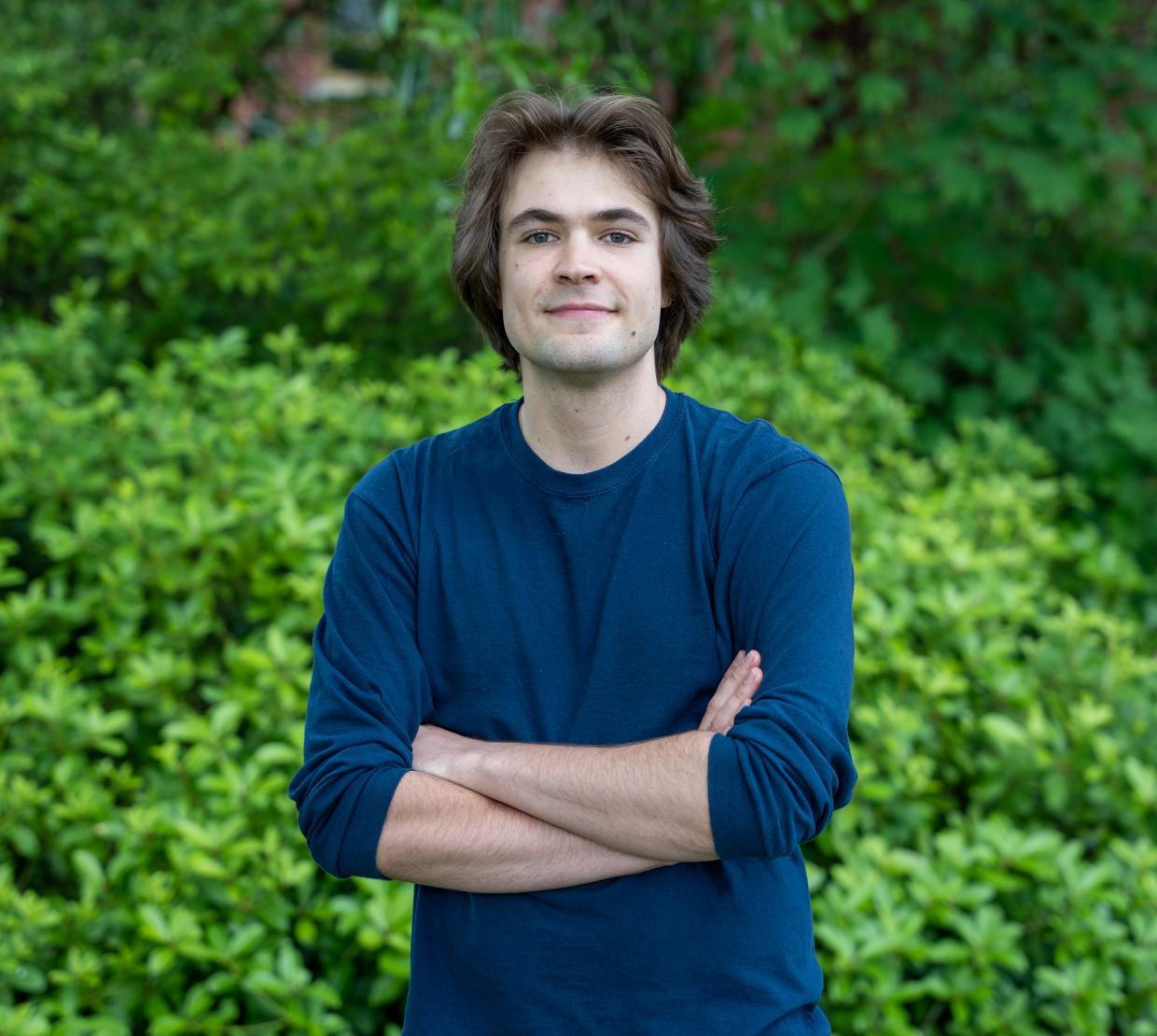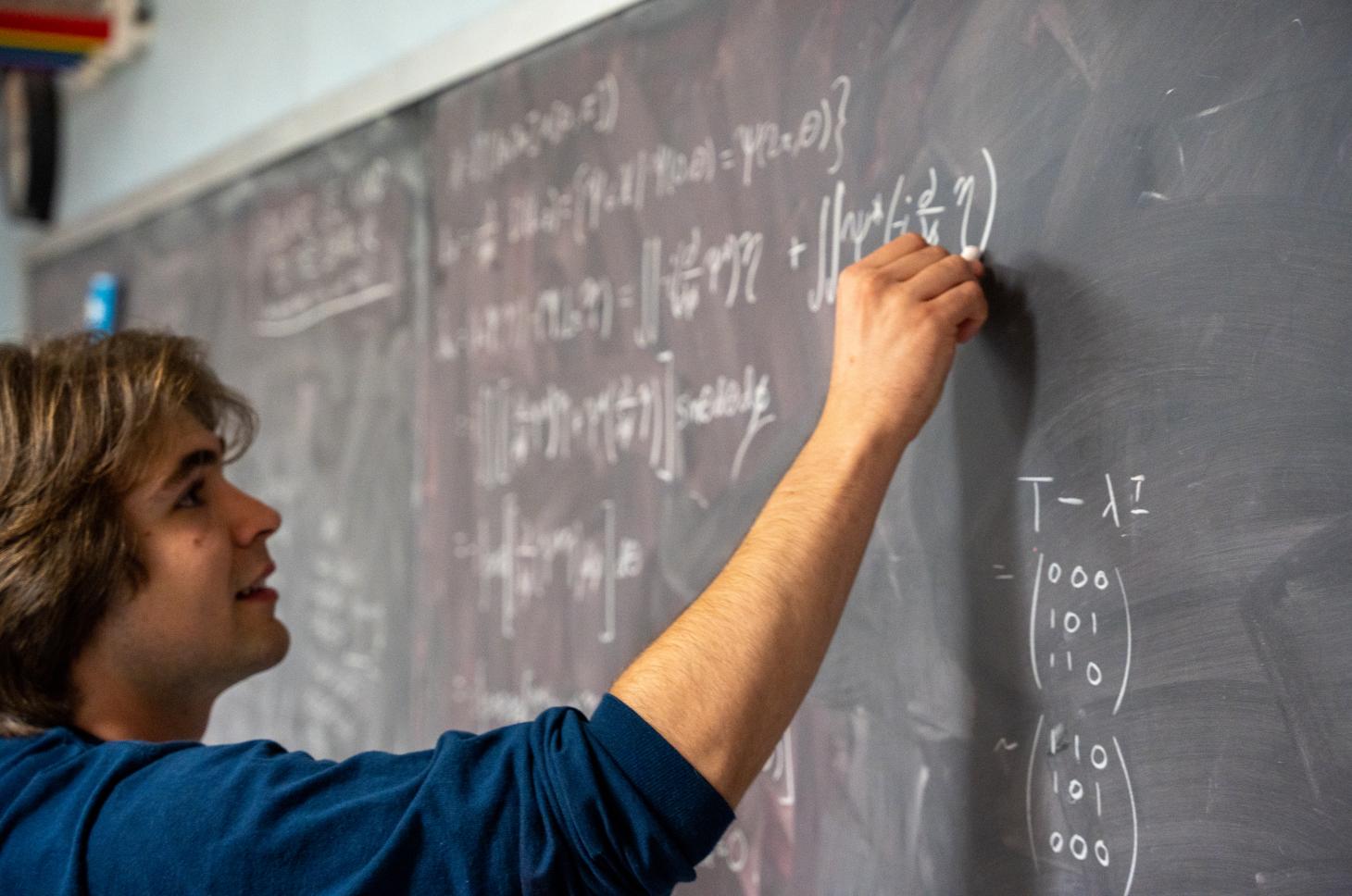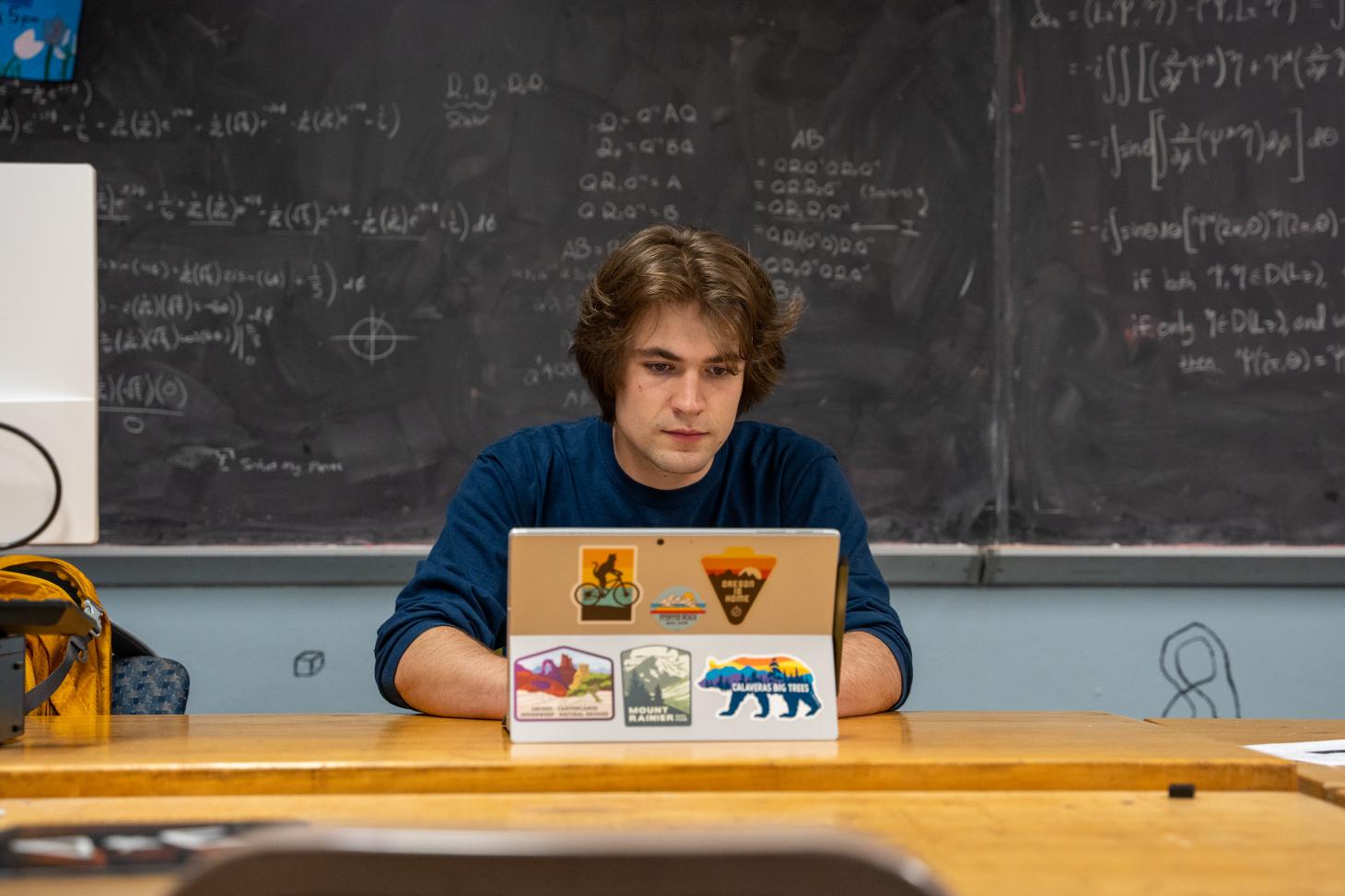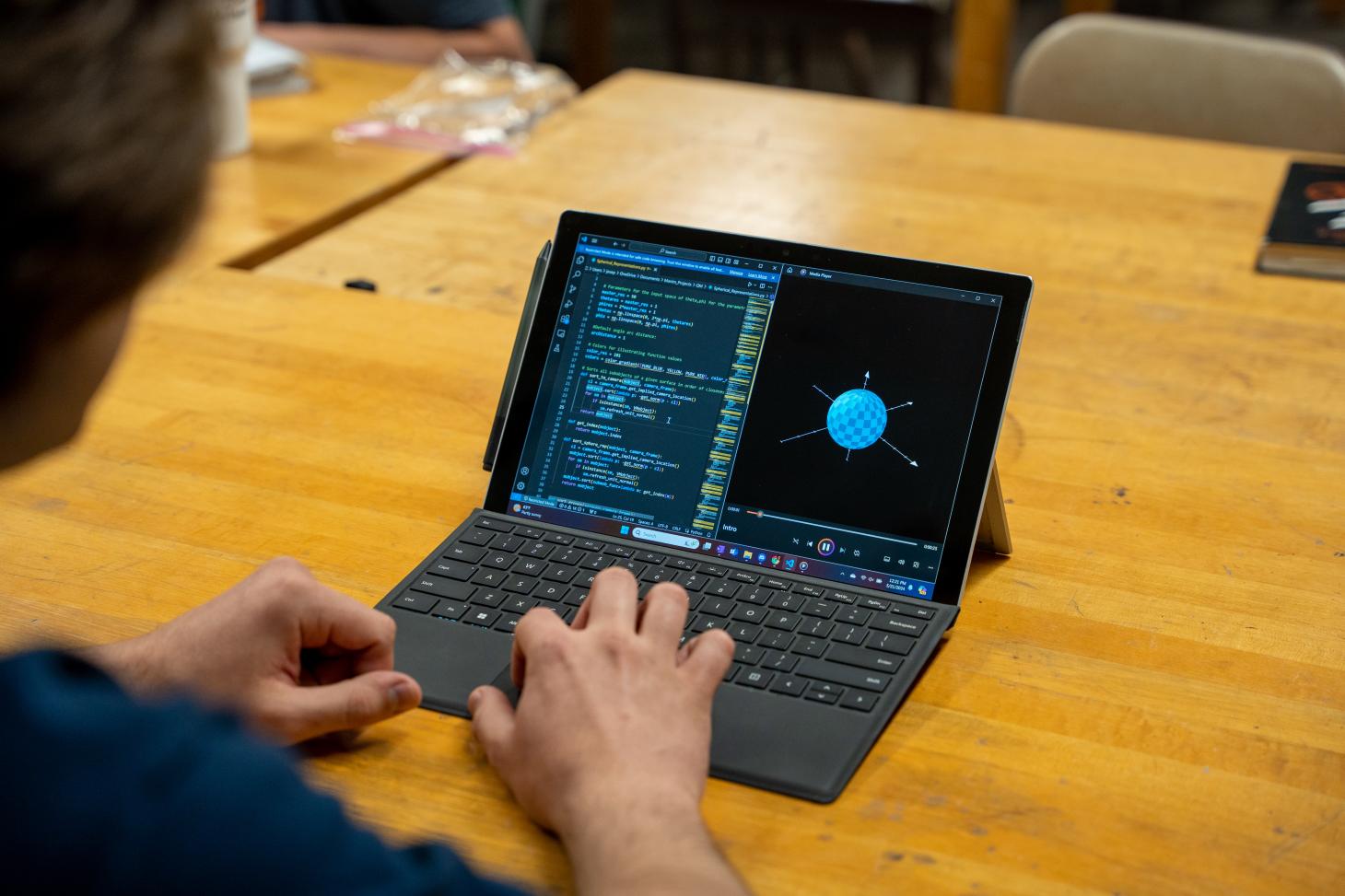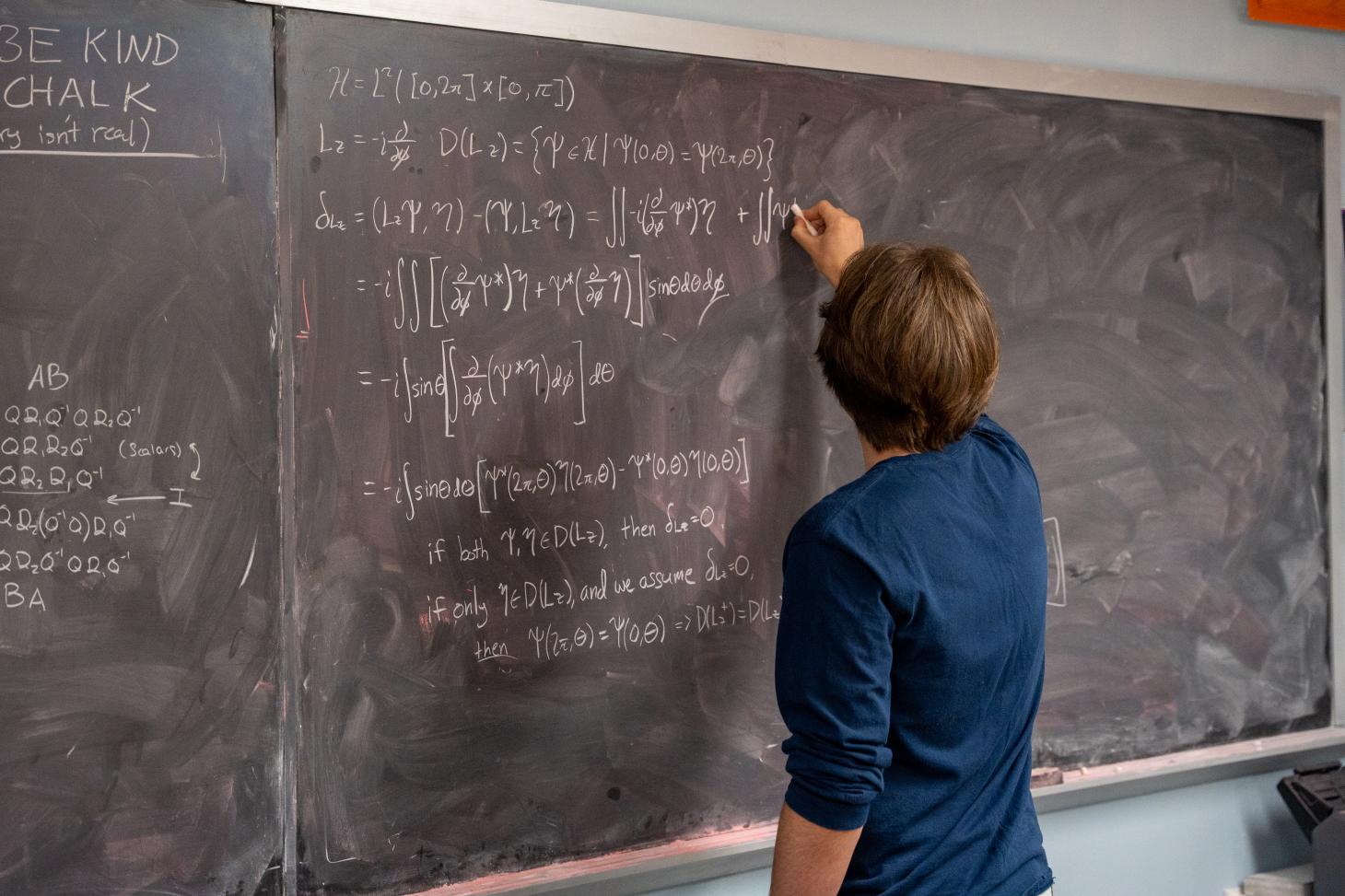“Getting an early start and giving kids the opportunities to learn more as early as they can is so important. It becomes second-nature if they start early enough,” he said.
Inspired by YouTuber 3Blue1Brown, who made animated mathematics content, Takach created his own video to help more students have access to an engaging, easier-to-grasp learning experience. His goal was to teach about an advanced mathematics topic: curl.
In vector mathematics, curl is a concept that involves measuring the rotational or swirling behavior of a vector field. A vector is a direction with a specified measurement, such as how fast a golf ball moves forward when hit with a golf club. Imagine a bunch of arrows pointing in the direction that the ball is moving – the longer the arrows, the stronger the force in that direction.
“There are tons of people online that make these kinds of videos. Making this content accessible to younger people is essential because the amount of science you need to know in order to advance in a field is very daunting,” Takach said.
He sent his video to Physics Professor Emeritus Corinne Manogue, the leader behind the Paradigms in Physics project funded by the National Science Foundation. This physics education project led to the creation of 19 new physics courses and focused on shifting the curricula from traditional lectures to active engagement for students at Oregon State.
She hired Takach to make more educational videos that were aligned with the physics curriculum, including quantum mechanics. The videos were intended to improve the learning experience for future physics students.
“The most concrete thing that I want to have an impact on is teaching. I love sharing the experience of learning something for the first time. It happens so frequently – it's the weirdest experience and when you share that with someone, It’s motivating, fulfilling and fun,” he said.
Physics Associate Professor Elizabeth Gire also had a positive influence on his academic career. After she taught one of his first upper-division physics courses, he left feeling inspired. "She really, really cares about the students and how much everyone's learning. I think that rubbed off on me. The way she goes about teaching and encouraging people to work together is definitely something to look up to and had a big impression on me.”
Looking back, one of Takach’s favorite memories at Oregon State is living with his friends for three years. "Two of my best friends from high school are still my roommates now. They’ve been a great support system.”
During his free time, Joey loves to dive into music and plays several instruments, including guitar, bass, viola and violin. When the sun comes out, he enjoys hiking, backpacking and traveling.
After completing his Ph.D. in California, Takach dreams of becoming a physics professor. “Learning and teaching for as long as possible is the most ideal for me. I need the connection to what is actually real. Not to say that math isn’t beautiful, but I think that applying math to something real is what is most important.”
